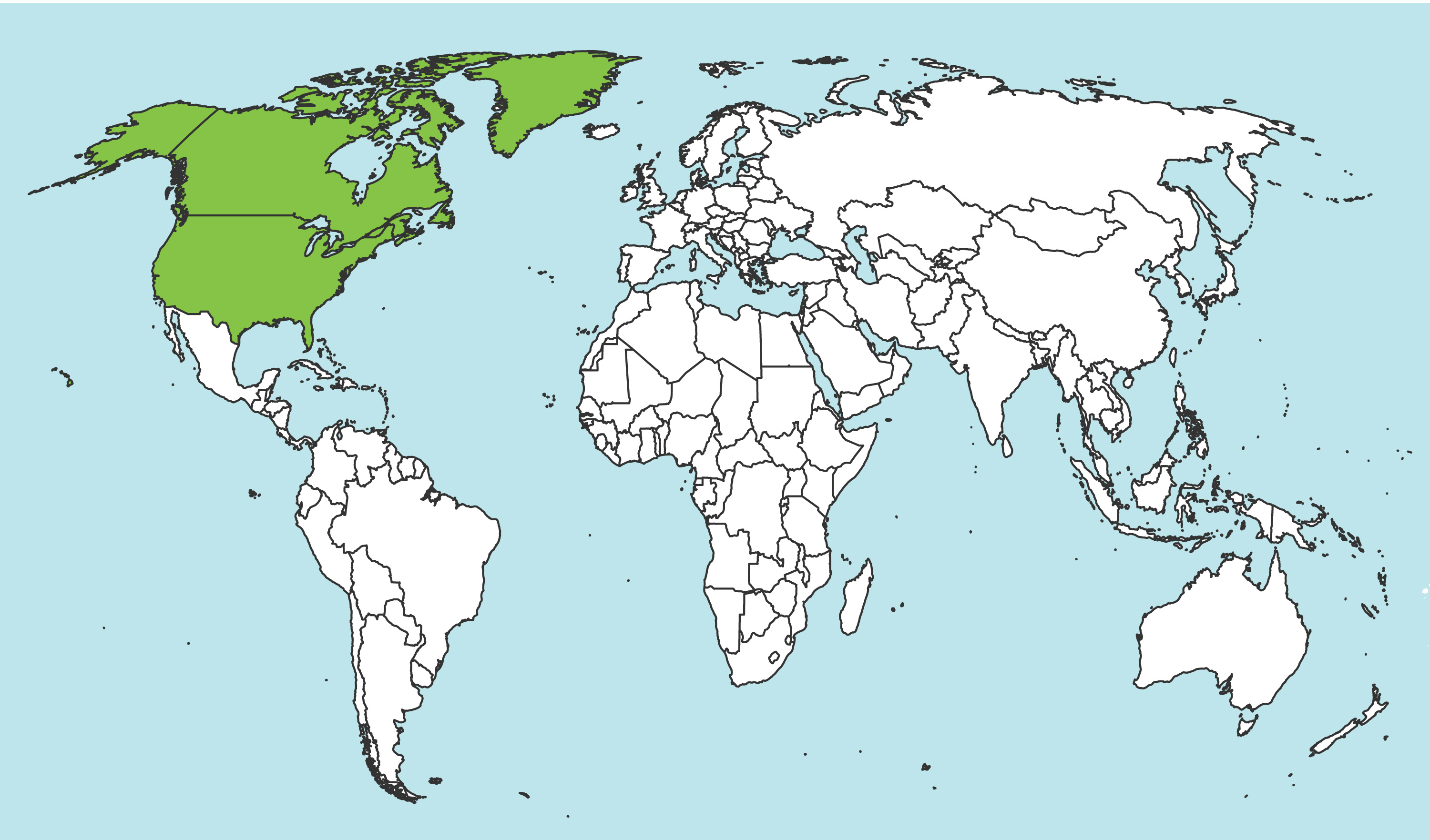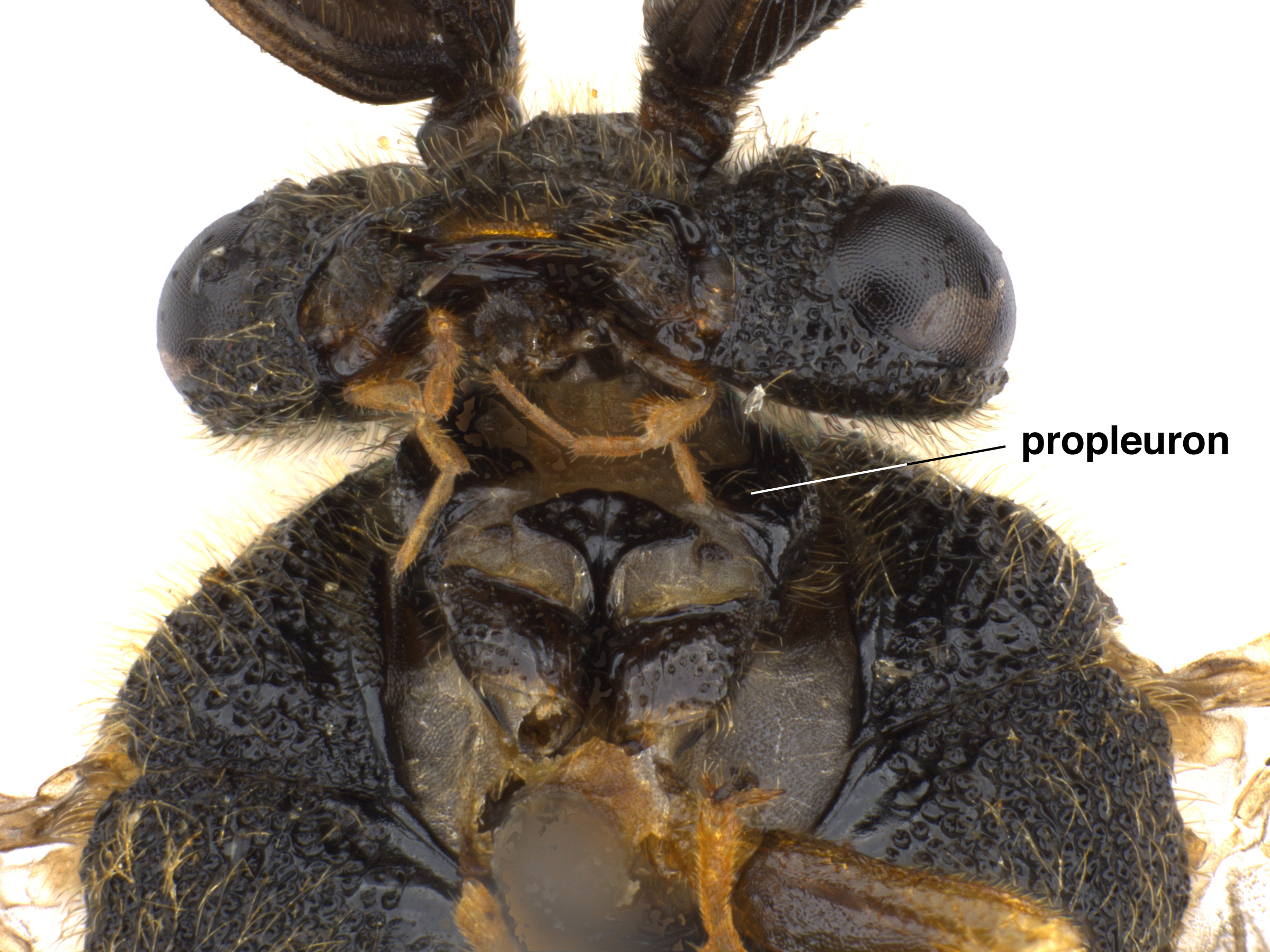Superfamily: Siricoidea
Family: Xiphydriidae
Family common name: xiphydriid sawflies
Subfamilies: Derecyrtinae, Xiphydriinae
The family Xiphydriidae is represented by one genus in North America, Xiphydria. Xiphydria is uncommon and is a wood borer of little economic importance (Smith and Middlekauff 1987Smith and Middlekauff 1987:
Smith DR and Middlekauff WW. 1987. Suborder Symphyta. In: Stehr FW ed. Immature Insects. Kendall/Hunt Publishing Company. Vol. 1: 754 pp.).
Xiphydriidae includes 28 genera and 146 species worldwide. A single genus and 11 species are NearcticNearctic:
describing the region of the Northern Hemisphere that includes North America south through northern Mexico
 in distribution (Taeger et al. 2018Taeger et al. 2018:
in distribution (Taeger et al. 2018Taeger et al. 2018:
Taeger A, Liston AD, Prous M, Groll EK, Gehroldt T, and Blank SM. 2018. ECatSymmdash;Electronic World Catalog of Symphyta (Insecta, Hymenoptera). Program version 5.0 (19 Dec 2018), data version 40 (23 Sep 2018). Senckenberg Deutsches Entomologisches Institut (SDEI), Muuml;ncheberg. https://sdei.de/ecatsym/ Accessed: 28 Jan 2020.).
 medially constricted as seen from above (Goulet 1992Goulet 1992:
medially constricted as seen from above (Goulet 1992Goulet 1992: long and closely connected ventrally (Goulet 1992Goulet 1992:
long and closely connected ventrally (Goulet 1992Goulet 1992: long laterally; head on a “neck” (Goulet 1992Goulet 1992:
long laterally; head on a “neck” (Goulet 1992Goulet 1992:In North America, Xiphydria feed on various species of common deciduousdeciduous:
describing a tree that drops its foliage once a year and then re-grows it; often senescence occurs before winter and re-growth occurs in the spring
trees (Goulet 1992Goulet 1992:
Goulet H. 1992. The genera and subgenera of the sawflies of Canada and Alaska: Hymenoptera. Symphyta. The insects and arachnids of Canada. Part 20. Agriculture Canada Publication.).
Xiphydriidae can be distinguished from other Siricoidea families by the distinctly round head, the constricted pronotumpronotum:
the anterodorsal part of the thorax, often situated posterior to the head
 , and the elongated propleuronpropleuron:
, and the elongated propleuronpropleuron:
a lateral sclerite located between the pronotum and episternum near the anterior of the body
 , or “neck” (Goulet 1992Goulet 1992:
, or “neck” (Goulet 1992Goulet 1992:
Goulet H. 1992. The genera and subgenera of the sawflies of Canada and Alaska: Hymenoptera. Symphyta. The insects and arachnids of Canada. Part 20. Agriculture Canada Publication.).
Xiphydriidae in North America are wood borers. Because the larvaelarva:
the immature stage of holometabolous insects
 bore into mostly dead or damaged tree limbs, Xiphydria is not considered to cause economic damage and is more likely a secondary pest. The life history is not well-known (Smith and Middlekauff 1987Smith and Middlekauff 1987:
bore into mostly dead or damaged tree limbs, Xiphydria is not considered to cause economic damage and is more likely a secondary pest. The life history is not well-known (Smith and Middlekauff 1987Smith and Middlekauff 1987:
Smith DR and Middlekauff WW. 1987. Suborder Symphyta. In: Stehr FW ed. Immature Insects. Kendall/Hunt Publishing Company. Vol. 1: 754 pp.).
World: The range of the family includes Europe, Asia, North and South America, Australia, and New Zealand (Goulet 1992Goulet 1992:
Goulet H. 1992. The genera and subgenera of the sawflies of Canada and Alaska: Hymenoptera. Symphyta. The insects and arachnids of Canada. Part 20. Agriculture Canada Publication.).
North America: Xiphydria is known from the eastern United States and Canada. One species occurs in British Columbia and Oregon (Smith and Middlekauff 1987Smith and Middlekauff 1987:
Smith DR and Middlekauff WW. 1987. Suborder Symphyta. In: Stehr FW ed. Immature Insects. Kendall/Hunt Publishing Company. Vol. 1: 754 pp.).